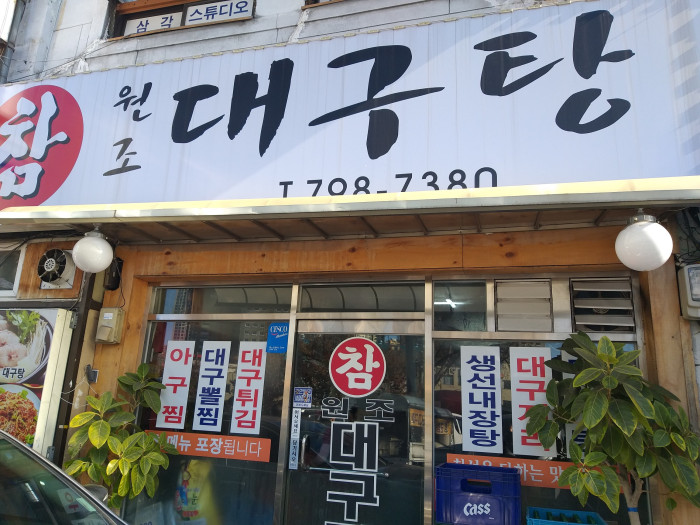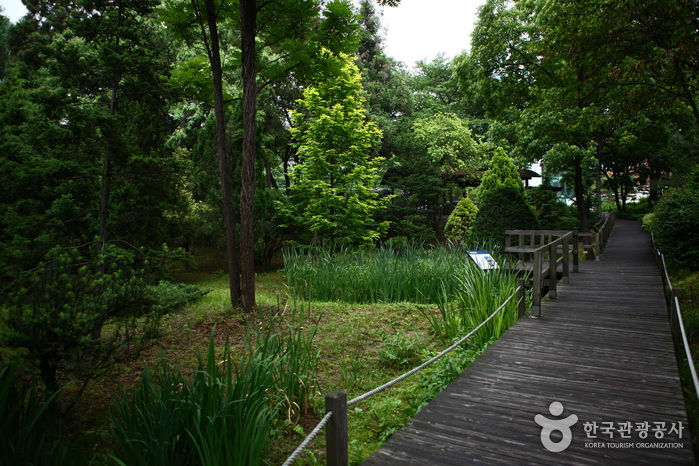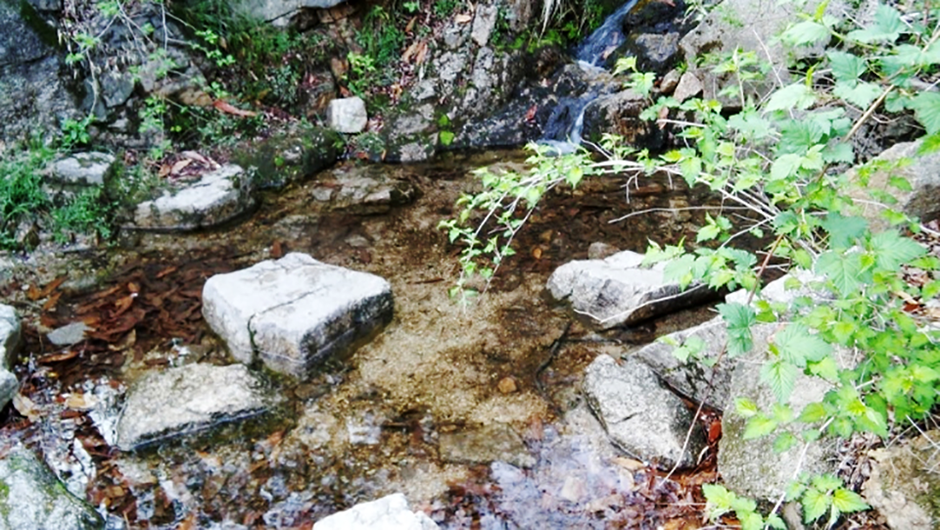Chamdaegutang (참대구탕)
4.4Km 2021-09-01
3, Hangang-daero 62-gil, Yongsan-gu, Seoul
+82-2-798-7380
This is a Korean cuisine located in Itaewon, Seoul. Clear fish soup boiled with codfish (fish). The best menu at this restaurant is codfish stew.
Hongneung Arboretum (홍릉수목원)
4.4Km 2020-05-23
57, Hoegi-ro, Dongdaemun-gu, Seoul
+82-2-961-2522
Hongneung Arboretum was the first arboretum in Korea, established in 1922 when experimental forests were built on Hongneung Royal Tomb, the burial mound of Queen Myeong-Seong. Hongneung Arboretum is managed by the Korea Forest Service, and houses a variety of domestic and international plants for both visitors to enjoy and researchers to study. The arboretum and Forest Sciece Exhibition Hall are open to the public. Student groups can enjoy natural science and forestry experiences with advanced reservation.
Suseongdonggyegok Valley (수성동계곡)
4.4Km 2023-08-17
185-3, Ogin-dong, Jongno-gu, Seoul 서울특별시 종로구 옥인동
Suseong-dong Valley's stream runs down from Inwangsan Mountain and joins Cheonggyecheon Stream, and it is said that the name of the village was called Suseong-dong during the Joseon dynasty due to the loud and clear sound of the flowing water. It appears in the painting "Jangdong Palgyeongcheop," which is Jangdong Eight Scenic Views, that depicts the eight scenic views of Bugaksan Mountain and Inwangsan Mountain as well as in other historical books of the Joseon dynasty as a place of scenic beauty. The valley was so famous for its beauty, that Prince Anpyeong of the Joseon dynasty built his house "Bihaedang" to fully enjoy the view, and the valley and its stone bridge were designated as a cultural property of Seoul in 2010.
King Sejong The Great Museum (세종대왕박물관)
4.4Km 2024-03-08
56, Hoegi-ro, Dongdaemun-gu, Seoul
+82-2-969-8851
King Sejong The Great Museum is a cultural complex located in the heart of Seoul, near Gwanghwamun Plaza.The Hangeul Room exhibits documents published during the reign of King Sejong, the Science Room displays Cheugugi and celestial planisphere, and the Korean Traditional Music Room showcases various traditional Korean musical instruments. The Biography Room features Portrait of King Sejong and paintings depicting scenes from his life. Outdoors, there are statues of King Sejong, the scahe sundial, the clepsydra, and Cheugugi.
Seoul Hyochang Park (서울 효창공원)
4.4Km 2024-07-09
177-18 Hyochangwon-ro, Yongsan-gu, Seoul
+82-2-2199-7608
Hyochang Park covers 122,245 square meters spanning across Hyochang-dong and Cheongpa 2-dong. It is a historic landmark that once contained several royal tombs, and was known at that time as Hyochangwon. The cemeteries that were originally located in Hyochangwon belonged to Crown Prince Munhyo, King Jeongjo’s first son who died at the age of five; Royal Noble Consort Uibin of the Seong Clan, King Jeongjo’s royal concubine and Crown Prince Munhyo’s mother; Royal Noble Consort Sugui of the Park Clan, King Sunjo’s royal concubine; and her daughter Princess Yeongon. The royal tombs were moved to Seooreung Tombs in the waning months of the Japanese colonial period. The Japanese empire began the development of Hyochangwon into a park in 1924, and the Japanese governor-general officially assigned the site as a park in 1940.
Presently, several of Korea’s greatest leaders are buried in Hyochang Park. The remains mostly belong to independence activists including Yoon Bong-gil, Lee Bong-chang, and Baek Jeong-gi, whose graves are collectively known as Samuisa Tomb. A statue of Lee Bong-chang has been built in the graveyard. Among the other patriotic martyrs who are interred in the park are Kim Gu and some of the key figures of the provisional government such as Lee Dong-nyeong, Cha I-seok, and Cho Seong-hwan. An ancestral shrine named Uiyeolsa has been built along the main gate and holds the portraits of the deceased independence activists.
Tasaki - Hyundai Apgujeong Main Branch [Tax Refund Shop] (타사키 현대본점)
4.4Km 2024-04-19
165, Apgujeong-ro, Gangnam-gu, Seoul
-
Fred - Hyundai Apgujeong Main Branch [Tax Refund Shop] (FRED 현대본점)
4.4Km 2024-04-17
2F, 165, Apgujeong-ro, Gangnam-gu, Seoul
-
Uno Watch Rolex - Hyundai Apgujeong Main Branch [Tax Refund Shop] (우노와치 롤렉스 현대본점)
4.4Km 2024-04-23
165, Apgujeong-ro, Gangnam-gu, Seoul
-
Lucenlee - Hyundai Apgujeong Main Branch [Tax Refund Shop] (루첸리 현대본점)
4.4Km 2024-04-19
165, Apgujeong-ro, Gangnam-gu, Seoul
-
Gucci - Hyundai Apgujeong Main Branch [Tax Refund Shop] (구찌 현대 본점)
4.4Km 2024-04-18
165, Apgujeong-ro, Gangnam-gu, Seoul
-





![Tasaki - Hyundai Apgujeong Main Branch [Tax Refund Shop] (타사키 현대본점)](http://tong.visitkorea.or.kr/cms/resource/50/2888050_image2_1.jpg)
![Uno Watch Rolex - Hyundai Apgujeong Main Branch [Tax Refund Shop] (우노와치 롤렉스 현대본점)](http://tong.visitkorea.or.kr/cms/resource/37/2889037_image2_1.jpg)
![Lucenlee - Hyundai Apgujeong Main Branch [Tax Refund Shop] (루첸리 현대본점)](http://tong.visitkorea.or.kr/cms/resource/20/2889520_image2_1.jpg)
 English
English
 한국어
한국어 日本語
日本語 中文(简体)
中文(简体) Deutsch
Deutsch Français
Français Español
Español Русский
Русский